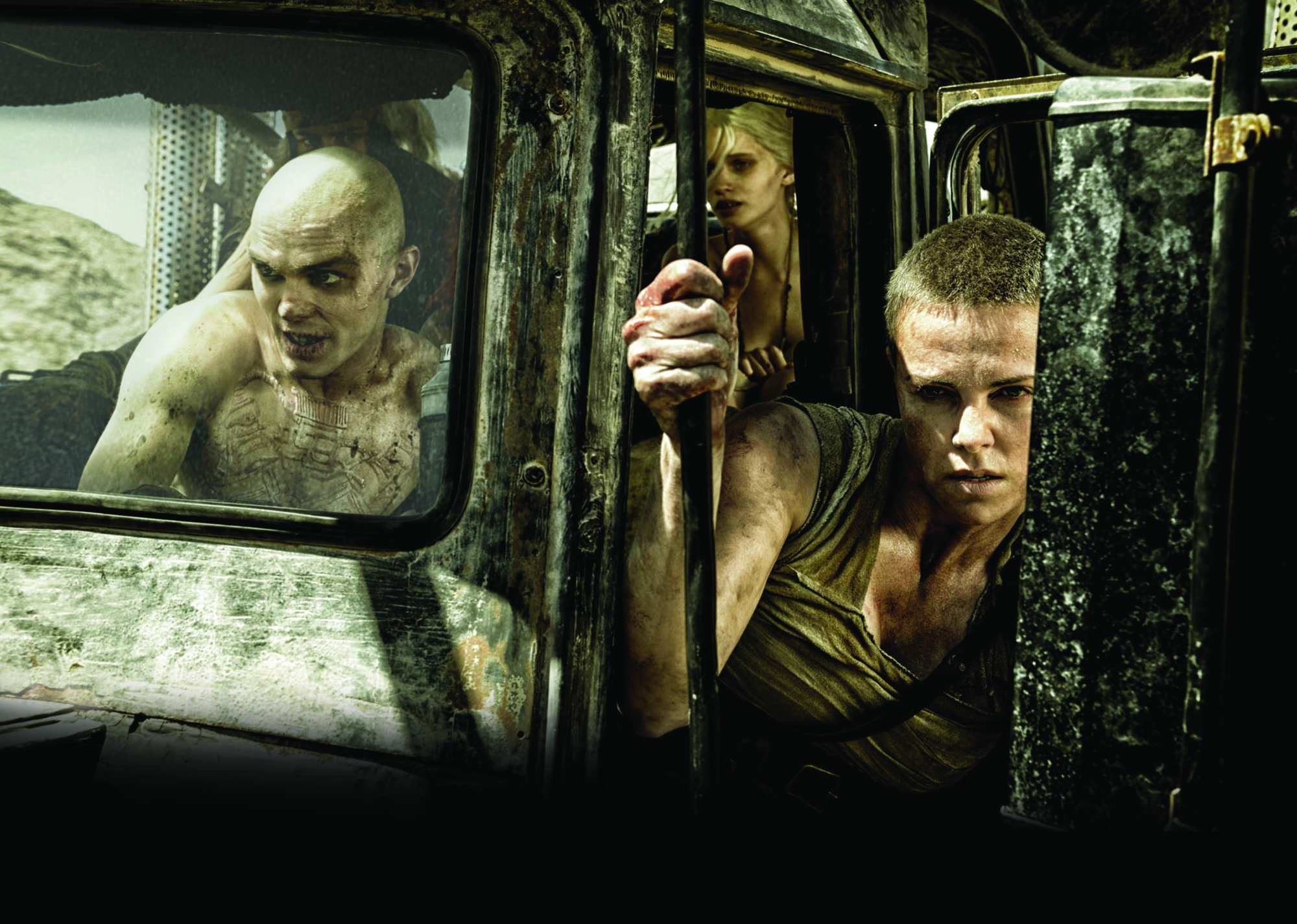When George Miller’s Mad Max: Fury Road was released in May this year, few expected it to be the commercial and critical triumph that it went on to become. The film was in development for twelve years – facing problems finding a leading man (Mel Gibson having become too old and possibly too controversial), and with studio-level cold feet delaying production numerous times – and the commencement of principal photography in 2012 itself seemed a miracle. Even then, the tumultuous shoot, which saw the production move from Australia to Namibia due to uncommonly rainy weather at the originally intended location of Broken Hill, only reinforced the idea that Fury Road was another in a long line of ill-fated franchise revivals by veteran directors.
As trailers started emerging, followed by press screenings, popular perception began to improve dramatically. Not only was Fury Road a visually spectacular return to action cinema for Miller (who, in recent years, seemed to have left the genre behind for family fare such as 1998’s Babe: Pig in the City and 2006’s Happy Feet and its 2011 sequel), but many were also surprised to find that he had injected what seemed to be a strongly feminist message into this most macho of film series. This, of course, fails to point out that women have always featured prominently in the series, as evidenced by Warrior Woman (Virginia Hey) from Mad Max 2: The Road Warrior (1981) and Aunty Entity (Tina Turner) from Mad Max Beyond Thunderdome (1985). Yet, if Miller had dabbled in portraying powerful women in these films, this latest instalment sees him take the idea further than ever before.
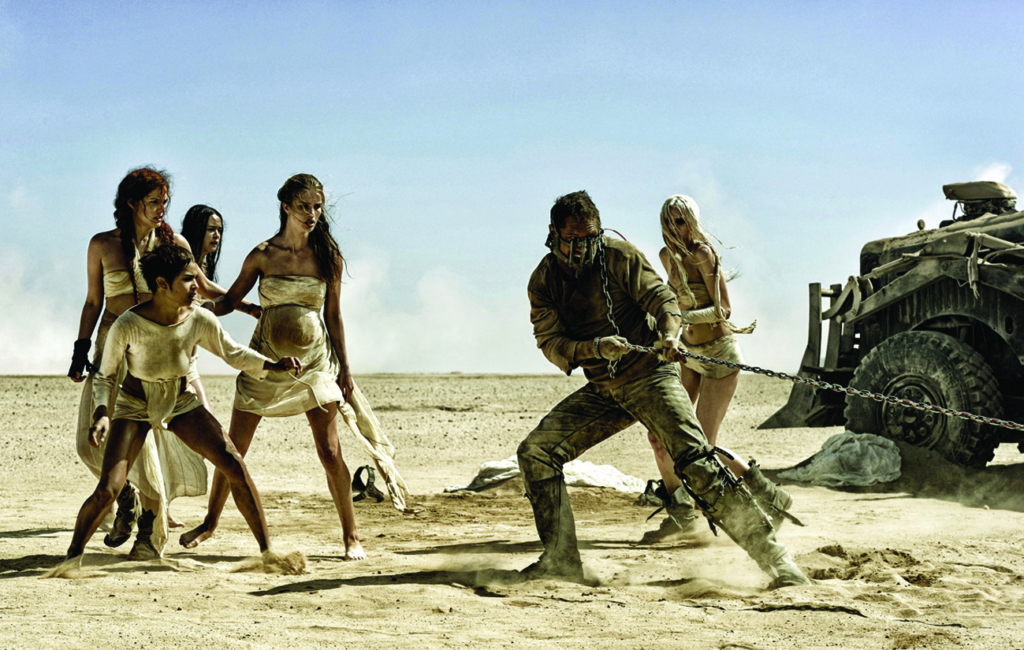
Central to the discussion of the feminism of Fury Road is Imperator Furiosa (Charlize Theron). The most trusted warrior of Wasteland despot Immortan Joe (Hugh Keays-Byrne), Furiosa turns against her master by liberating the Five Wives – a quintet of genetically pure women imprisoned by Joe for the purpose of siring non-mutated offspring – kicking off what is essentially a two-hour-long chase scene as Joe and his amassed forces hunt down Furiosa and the Five Wives across the Wasteland. In essence, Furiosa is part of a longstanding tradition of female action heroes that can kick butt just as hard as any man, but are able to show raw emotion where more traditional male heroes may just grunt stoically. She is, as Rolling Stone’s Peter Travers describes, ‘the film’s bruised heart and soul’,[1]Peter Travers, ‘Mad Max: Fury Road’, Rolling Stone, 13 May 2015, <http://www.rollingstone.com/movies/reviews/mad-max-fury-road-20150513>, accessed 10 August 2015. and is the closest the film comes to a conventional hero. She acts as de facto leader of the Five Wives, who themselves prove to be much more resourceful than their willowy frames suggest, and eventually of the Vuvalini, the all-female tribe from whom Furiosa was taken as a child and who still guard the Green Place of her youth. In fact, among the heroes there are only two men: Max himself, and Nux (Nicholas Hoult), a warrior in Joe’s personal army, the War Boys, who is captured by and eventually joins forces with the fugitive band. Conversely, Joe’s forces are all male – save for the Five Wives’ matron, Miss Giddy (Jennifer Hagan), who herself aids their escape and turns a shotgun (unsuccessfully) on Joe when he learns of their flight.
In essence, Furiosa is part of a longstanding tradition of female action heroes that can kick butt just as hard as any man, but are able to show raw emotion where more traditional male heroes may just grunt stoically.
With this clear divide in allegiance between the sexes, and a character as striking as Furiosa (thanks particularly to Theron’s powerful performance), it’s easy to see why the film quickly gathered positive word-of-mouth as a pro-feminist piece. Yet Miller himself, at the film’s press conference at the Cannes Film Festival, describes this as an element that was born of plot mechanics rather than part of his original vision: ‘Initially, there wasn’t a feminist agenda […] But it couldn’t be a man taking five wives from another man. That’s an entirely different story. So everything grew out of that.’[2]George Miller, quoted in Gregg Kilday, ‘Cannes: Mad Max’s Tom Hardy Says He Owes Director George Miller an Apology’, The Hollywood Reporter, 14 May 2015, <http://www.hollywoodreporter.com/news/cannes-2015-mad-maxs-tom-795589>, accessed 10 August 2015. If this is true, it would be fascinating to know how much of the original story ended up in the film because the issue of gender permeates Fury Road. Miller even went as far as to hire The Vagina Monologues writer Eve Ensler to coach the actors playing the Five Wives, using her experiences with trafficked enslaved women in places such as Bosnia, Haiti and the Congo as reference. Ensler has praised the film for the autonomy it grants its female characters:
To me feminism […] means women are equal. We have equal roles, equal rights, equal pay. If you look at this film from an objective point of view, women are equally capable of fighting. Women have equal desires. Women are independent and have agency over their own lives. They exist without men.[3]Eve Ensler, quoted in Ian Youngs, ‘Eve Ensler on Trafficking Drama and Why Mad Max Is Feminist’, BBC News, 24 May 2015, <http://www.bbc.com/news/entertainment-arts-32824637>, accessed 10 August 2015.
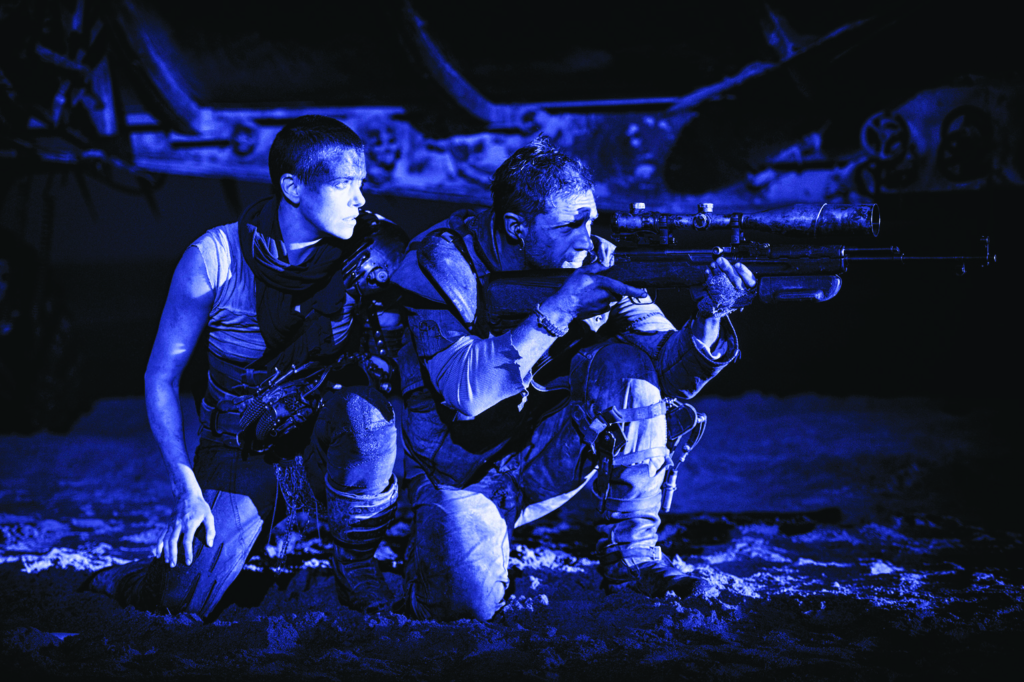
Yet as much as attention has understandably been directed towards the female characters, Fury Road’s attitude to gender is not just tied to its depiction of women. Less talked about, but equally important, is the way that Miller uses the film to attack several key tenets of traditional masculinity. Several times in the narrative we see and hear the question ‘Who killed the world?’ It’s scrawled on the wall of the Five Wives’ chamber, and shouted at Nux by lead wife The Splendid Angharad (Rosie Huntington-Whiteley). While the answer to this question is never said aloud, there is no doubt that it is ‘men’. Men – or, at least, unchecked masculinity – has brought about the collapse of society and has kept it in the dirt, and Miller depicts exactly why.
Fury Road’s attitude to gender is not just tied to its depiction of women. Less talked about, but equally important, is the way that Miller uses the film to attack several key tenets of traditional masculinity.
The most obvious aspect, the glorification of war and death, is embodied by the War Boys. Raised to execute Joe’s will and indoctrinated into a creed of suicidal glory-hunting, each War Boy strives to achieve the most glorious death possible in service to Joe and witnessed by as many of his brethren as possible, so that he may ascend ‘to Valhalla, shiny and chrome’. Nux is our guide into this strange mixture of hooliganism, Viking philosophy and car porn. A young and especially sickly War Boy, he first encounters the captured Max when he claims the latter as his ‘blood bag’ (the War Boys come from mutated genetic stock and require regular blood transfusions to sustain their tumour-strewn bodies). He is initially a rather ridiculous character, his hyperactive hero-worship of Joe and incompetent efforts to ‘die historic on the Fury Road’ providing a source of comic relief. However, Nux’s failed attempts at an honourable death lead to his rejection by the Immortan, forcing him to question the creed in which he was raised and ultimately giving him new purpose in helping Max and Furiosa save the Five Wives. Nux’s arc sees him discover the virtues of self-sacrifice and helping others, as opposed to the War Boy way that celebrates violence as the purest expression of masculinity, and has seen a generation of equally naive boys willingly destroy themselves at the bidding of an old man who keeps the spoils for himself.
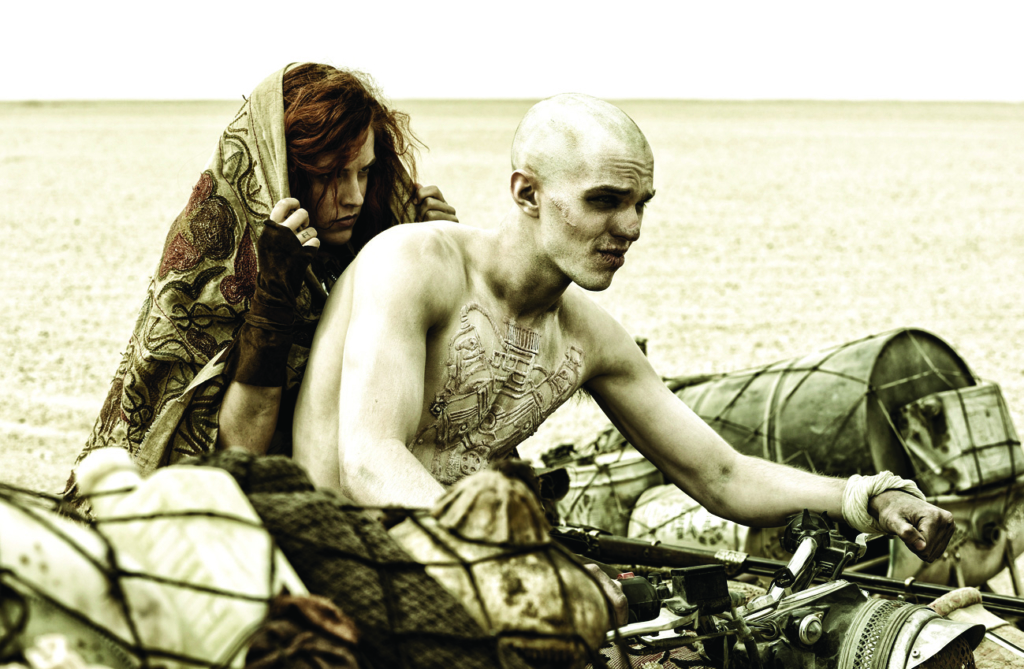
This old man, Immortan Joe, is himself a parody of male-centric militaristic glory. His medal-strewn body armour, moulded to give the appearance of exaggerated musculature yet milky and semi-translucent in material, looks more like the carapace of a sickly beetle than anything that would hold together in combat. It, like his fearsome skull-grin mask, is simply a costume, something to project a sense of power and conceal his diseased, sore-ridden body. Joe embodies the masculine belief that the appearance of strength is paramount – and best when you have younger, fitter men who don’t know better to prove your might for you.
However, Joe also represents the greed for control intrinsic to the patriarchy. In her seminal book The Politics of Reproduction, philosopher Mary O’Brien identifies the discovery of paternity as a historical point of transformation in the male reproductive consciousness, which made it possible for men to decree ownership over their children, thus appropriating the reproductive labour of women. This ‘potency principle’ is a result of ‘men’s desire to gain control over the continuity of generations, which women are more simply and obviously part of, since they give birth’.[4]Mary O’Brien, paraphrased in Robbie Pfeufer Kahn, ‘Cats Do Go to Heaven: Remembering Mary O’Brien’, Canadian Woman Studies, vol. 18, no. 4, 1999, available at <http://cws.journals.yorku.ca/index.php/cws/article/view/8059/7239>, accessed 10 August 2015, p. 9. It’s a principle that still holds immense power even today, with archaic attitudes towards such issues as birth control and abortion still regarding the ability of a woman’s body to create children as something that women themselves should not completely govern. Furthermore, cases of reproductive coercion, in which men force their female partners to become pregnant as a means of exerting control, are still common even in Western society.[5]See, for example, Kate Marsh, ‘Male Partner Pregnancy-controlling Behaviour: The Emerging Crisis Point of Violence Against Women’, Daily Life, 30 November 2014, <http://www.dailylife.com.au/news-and-views/dl-opinion/male-partner-pregnancycontrolling-behaviour-the-emerging-crisis-point-of-violence-against-women-20141128-11w9a0.html>, accessed 10 August 2015. Joe’s wives, locked up in his citadel, are literal representations of this patriarchal urge. In a world where most people are racked with radiation sickness and highly unlikely to produce healthy children (as evidenced by the War Boys), the means to reproduce arguably becomes the most valuable commodity of all – one that Joe exults in hoarding for himself. He even has a band of what may be older wives hooked up to milking machines, collecting their breast milk as a delicacy and commodity. Joe has seized ownership of reproduction, of the very essence of parenthood: one tyrannical father in the citadel, in direct opposition to the ‘many mothers’ (another name given to the Vuvalini) of the Green Place.
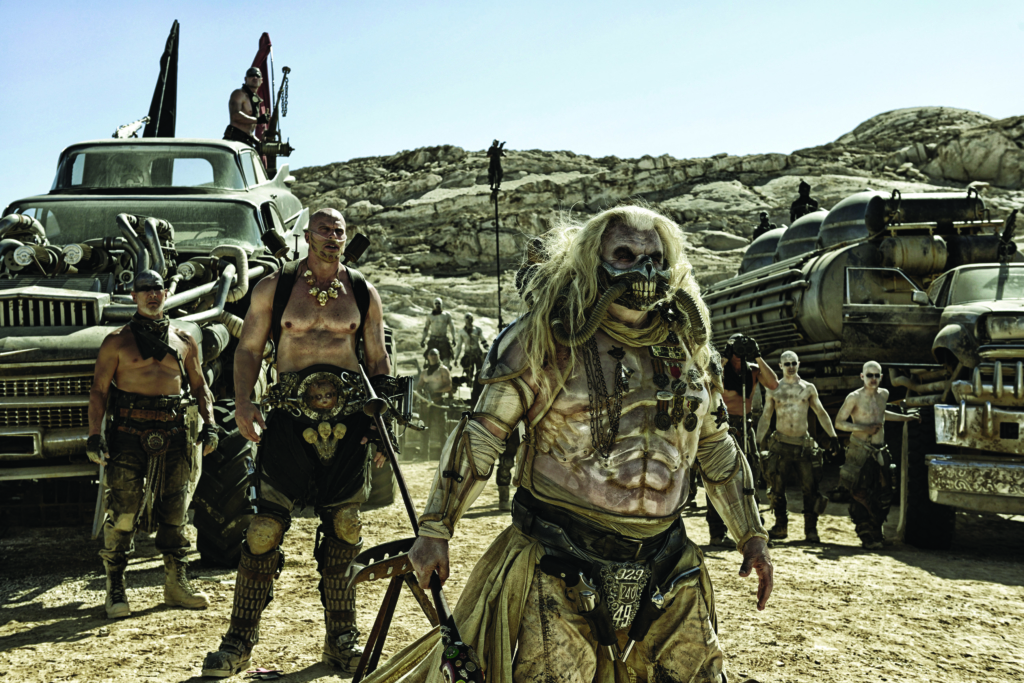
More than just a warlord, Joe defines himself in terms of patriarchy. He feels that he provides his society with healthy babies and milk via his women, and even takes it upon himself to dole out the citadel’s groundwater based on what he perceives to be the needs of his people. ‘Do not become addicted to water,’ he lectures as he douses the throng with a pathetically inadequate gush from pipes fitted for mass rationing. ‘It will take hold of you, and you will resent its absence.’ It’s not just sexism that is the enemy; so, too, is the patriarchal infrastructure on which it hangs – one that was in place well before the world was killed. As critic Jessica Valenti observes:
[T]hat’s what makes the movie so forward-thinking: it’s not feminist because Theron’s character gets to engage in as much violence as any other action lead, but because the world […] shows the horror of sexism and the necessity of freedom from patriarchy.[6]Jessica Valenti, ‘Sexists Are Scared of Mad Max Because It Is a Call to Dismantle Patriarchies’, The Guardian, 27 May 2015, <http://www.theguardian.com/commentisfree/2015/may/27/sexists-are-scared-of-mad-max-because-it-is-a-call-to-dismantle-patriarchies>, accessed 10 August 2015.
This brings us to Max, who is himself incorporated into this deconstructive process. For the most part, he is generally portrayed as not sharing the masculine beliefs of the villains, nor of the men who ‘killed the world’. He seems unfazed by either the beauty of the Five Wives or the prospect of working on equal terms with Furiosa. And, when we are introduced to the Vuvalini – via one of their number naked on a scaffolding, pretending to be a captive – it’s Max who is not mollified, correctly intuiting it to be a trap. However, Miller sets his sights on what is arguably the key element of Max’s charisma: his individuality. Max is one of cinema’s great ‘last men standing’, an archetype that celebrates the masculine belief that isolation and independence are sources of strength. He has always been portrayed as the master of his environment, a one-man Seven Samurai (Akira Kurosawa, 1954) who tames the land for weak innocents who cannot stand up for themselves, before fading back into isolation so that his memory can become legend.
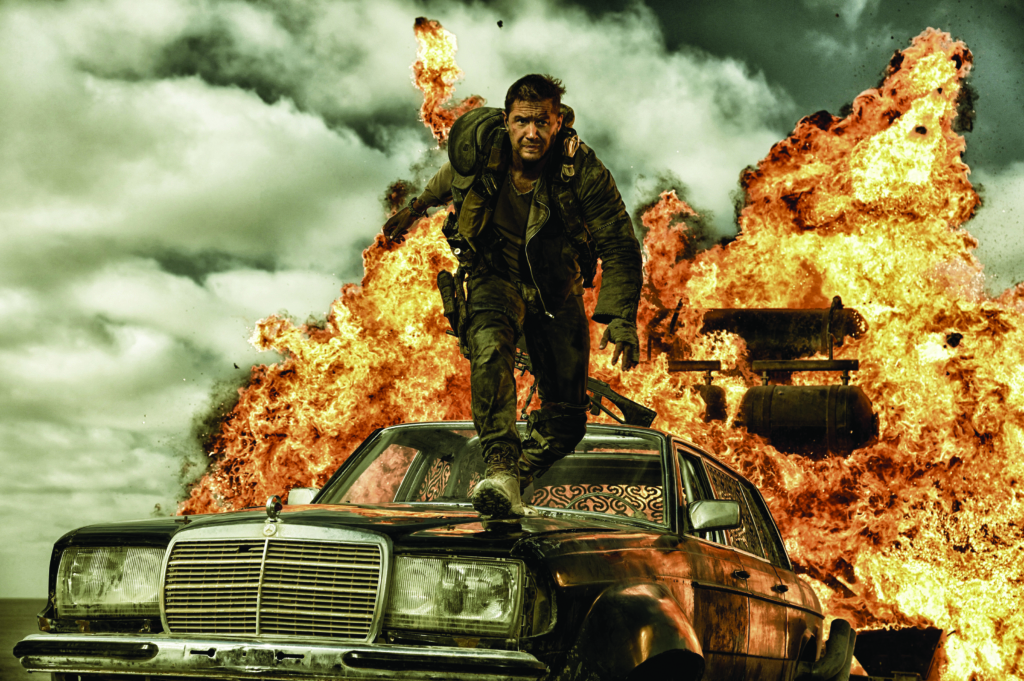
In a sense, Fury Road follows this template – again, we see Max turn up out of nowhere in time to help an oppressed group find salvation – but, this time, Miller isn’t quite as enamoured of Max’s stoic solitude. From his first appearance in the film, chewing on a two-headed lizard while being stalked by the ghosts of unknown people from his past for whose deaths he feels responsible, something seems more than a little off about Max. Hardy’s performance, while preserving the taciturn cool of Gibson’s portrayal, has a skittish, haunted quality to it, his guttural verbalisations and wandering accent (which starts off Australian but seems to get thicker and less recognisable as the film goes on) betraying the erosion of any social skills Max may have had before his self-imposed exile.
The film opens with Max getting captured by the War Boys, losing his V8 Interceptor (the car that has become almost as powerful an emblem of the franchise as Max himself) and, after an unsuccessful escape attempt, getting strapped to the front of Nux’s car as a mobile blood bag. It’s a pretty poor result for the legendary Road Warrior, and Miller milks the indignity of his predicament for all it’s worth: ‘They took my blood, now my car!’ He is only able to escape when Furiosa drives into a massive sandstorm and totals Nux’s car – and, even then, Max is unable to get away in Furiosa’s War Rig, thanks to a precautionary kill switch installed by the Imperator. Max may have evaded Joe and his minions, but at the cost of having to deal with yet another ragtag band of desperates.
This time, though, it’s not up to Max to do all the hard work. In fact, for much of the film, he seems happy for Furiosa to lead the charge – something that has horrified some commentators in the lead-up to the film’s release. Aaron Clarey of the self-described ‘blog for heterosexual, masculine men’ Return of Kings objects to the depiction of Furiosa giving orders to Max, protesting, ‘Nobody barks orders to Mad Max’[7]Aaron Clarey, ‘Why You Should Not Go See “Mad Max: Feminist Road”’, Return of Kings,11 May 2015, <http://www.returnofkings.com/63036/why-you-should-not-go-see-mad-max-feminist-road>, accessed 10 August 2015. and assuming a weakening – or, if you want to be dramatic, an emasculation – of this most manly of cinematic heroes. The response to such criticisms comes late in the film, when Max replenishes the group’s supply of weapons by single-handedly raiding the vehicle of the Bullet Farmer (Richard Carter), a trade partner of Joe’s who supplies weapons to the region. It is the only action sequence in the film not to be shown head-on, instead reduced to ghostly flashes of explosions in the fog from Furiosa’s point of view. Slowly, Max returns, loaded with guns and covered in blood – and not, as Furiosa notes, his own. It implies that, far from being weak, Max possesses a capacity for brutality that even the film wants to keep hidden, and this helps explain his taciturn behaviour and reluctance to engage with others.
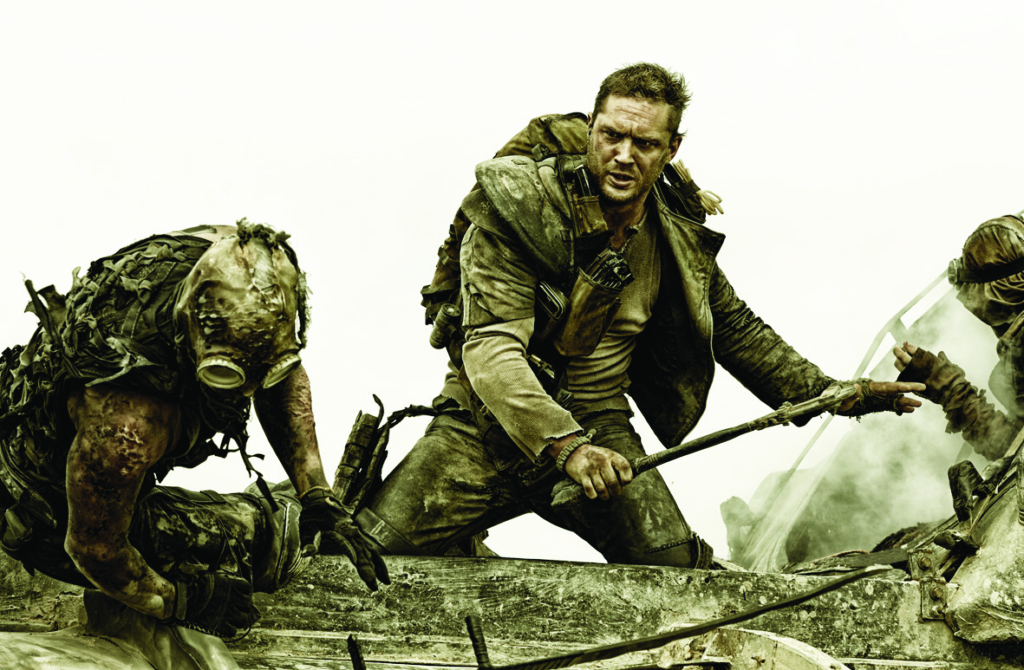
At the same time, Max and Furiosa quickly develop a synergy in battle, a kind that neither seems able to muster alone – a genuine partnership rather than the subservience against which Clarey rails. This is expressed most memorably in a scene in which Max fails to hit the Bullet Farmer’s headlights with his rifle, then lends his shoulder for Furiosa, the better shot. Maria Bustillos of The Awl writes that this alliance points to more than a simple assertion of female capability:
The discussion around feminism has meant that so far, there has been little comment on Fury Road’s preoccupation with the evolution of men in recent decades. It’s a movie about how men and women can be not just ‘allies’ to one another, as if our fates were separate, but real comrades, who must overthrow a common enemy and share a common fate.[8]Maria Bustillos, ‘The Startling Humanism of Mad Max: Fury Road’, The Awl, 22 May 2015, <http://www.theawl.com/2015/05/the-startling-humanism-of-mad-max-fury-road>, accessed 10 August 2015.
Men have certainly evolved past notions of ‘masculinity’ that have been perpetuated far past their use-by date. Miller may have created a classic example of the all-conquering independent male in Max, but, in an ironically paternal move, he uses Fury Road to declare the obsolescence of that very idea. On his own, Max is helpless; with Furiosa and the Five Wives, he gains purpose and regains not only his strength but also a link to his own humanity. ‘Max … My name is Max. That’s my name,’ he tells the critically wounded Furiosa during the film’s climax as he gives her his blood to save her. Hardy’s delivery is halting, then confident as he nods to himself; it’s as though he’s reminding himself of his name just as much as telling her. As his arc is completed, he rediscovers his sense of trust, his willingness to be involved with others, and his own identity. Tellingly, we even hear a hint of Australian sneak back into his accent as he utters the words.
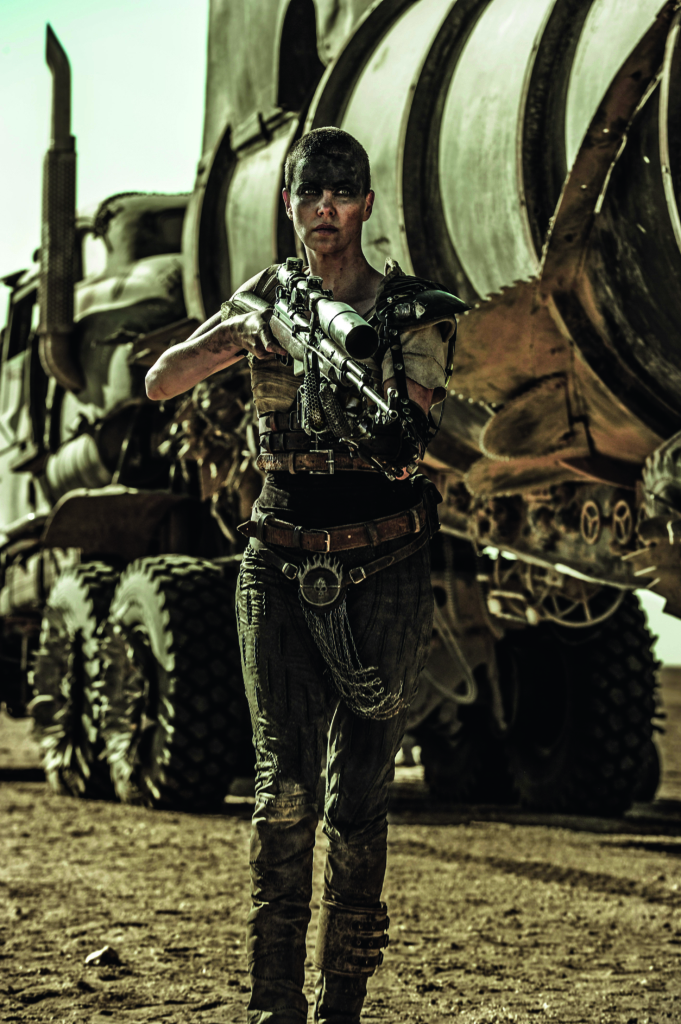
In the final scene of the film, he decides not to join the women in ascending to the citadel; instead, after swapping a quick look of recognition with Furiosa, he disappears into the crowd, presumably in search of his next adventure. It is, on the one hand, in keeping with franchise tradition: Max walking off into the Wasteland, passing into legend. But, on the other, it’s Miller smartly acknowledging that, just because a film has a positive message or because its characters have arcs, doesn’t always mean that change is complete, or completely positive. For all that he’s learned, Max still obeys the call of solitude just as Nux whispers, ‘Witness me,’ as he finally achieves his glorious death. Miller never forgets that the Wasteland is a hard place; the real battle facing its denizens, he suggests, is making sure that they never totally surrender to that hardness.
The triumph of Mad Max: Fury Road doesn’t necessarily lie in its championing of women – it is, ultimately, hardly bringing any revolutionary ideas to contemporary gender politics – but rather in the packaging of these ideas. Miller has succeeded in making a multi-layered statement regarding the socially transmitted expectations placed on women by men – and, for that matter, those that men place on themselves – in a way that integrates seamlessly into an already well-established universe. By managing such a synergy between the film’s political concerns and its almost-overwhelming pace and intensity, Miller presents a masterclass in how genre cinema can speak about society while maintaining the raw energy of fantasy.
Endnotes
| 1 | Peter Travers, ‘Mad Max: Fury Road’, Rolling Stone, 13 May 2015, <http://www.rollingstone.com/movies/reviews/mad-max-fury-road-20150513>, accessed 10 August 2015. |
|---|---|
| 2 | George Miller, quoted in Gregg Kilday, ‘Cannes: Mad Max’s Tom Hardy Says He Owes Director George Miller an Apology’, The Hollywood Reporter, 14 May 2015, <http://www.hollywoodreporter.com/news/cannes-2015-mad-maxs-tom-795589>, accessed 10 August 2015. |
| 3 | Eve Ensler, quoted in Ian Youngs, ‘Eve Ensler on Trafficking Drama and Why Mad Max Is Feminist’, BBC News, 24 May 2015, <http://www.bbc.com/news/entertainment-arts-32824637>, accessed 10 August 2015. |
| 4 | Mary O’Brien, paraphrased in Robbie Pfeufer Kahn, ‘Cats Do Go to Heaven: Remembering Mary O’Brien’, Canadian Woman Studies, vol. 18, no. 4, 1999, available at <http://cws.journals.yorku.ca/index.php/cws/article/view/8059/7239>, accessed 10 August 2015, p. 9. |
| 5 | See, for example, Kate Marsh, ‘Male Partner Pregnancy-controlling Behaviour: The Emerging Crisis Point of Violence Against Women’, Daily Life, 30 November 2014, <http://www.dailylife.com.au/news-and-views/dl-opinion/male-partner-pregnancycontrolling-behaviour-the-emerging-crisis-point-of-violence-against-women-20141128-11w9a0.html>, accessed 10 August 2015. |
| 6 | Jessica Valenti, ‘Sexists Are Scared of Mad Max Because It Is a Call to Dismantle Patriarchies’, The Guardian, 27 May 2015, <http://www.theguardian.com/commentisfree/2015/may/27/sexists-are-scared-of-mad-max-because-it-is-a-call-to-dismantle-patriarchies>, accessed 10 August 2015. |
| 7 | Aaron Clarey, ‘Why You Should Not Go See “Mad Max: Feminist Road”’, Return of Kings,11 May 2015, <http://www.returnofkings.com/63036/why-you-should-not-go-see-mad-max-feminist-road>, accessed 10 August 2015. |
| 8 | Maria Bustillos, ‘The Startling Humanism of Mad Max: Fury Road’, The Awl, 22 May 2015, <http://www.theawl.com/2015/05/the-startling-humanism-of-mad-max-fury-road>, accessed 10 August 2015. |
